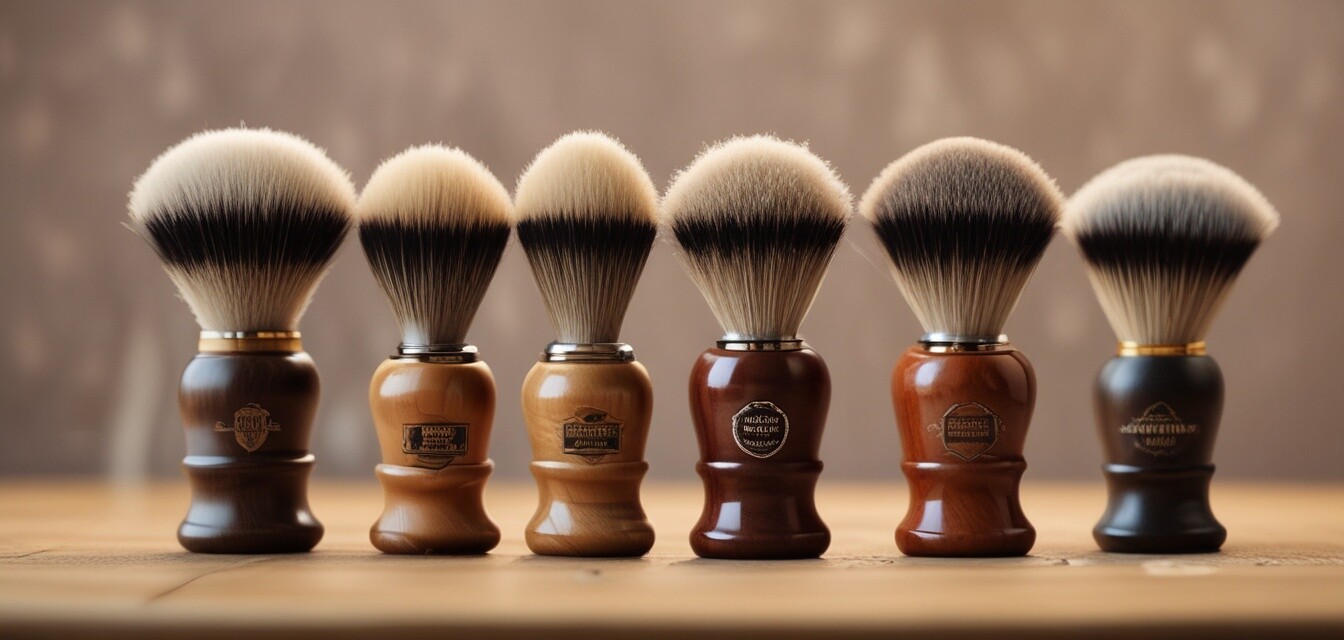
The Best Shaving Brushes to Elevate Your Routine
Key Takeaways
- Choosing the right shaving brush can enhance your overall shaving experience.
- Different materials and bristle types affect lathering performance and comfort.
- Consider your skin type, grooming habits, and preferences when selecting a brush.
When it comes to achieving a perfectly smooth shave, selecting the right shaving brush is essential. A quality shaving brush not only helps in lathering your shaving cream or soap effectively but can also elevate your whole grooming routine. In this guide, we'll explore the various materials and bristle types available, providing insights to help you make informed choices.
Why is a shaving brush important?
A good shaving brush serves multiple purposes: it helps create a rich lather, exfoliates the skin, and lifts facial hair for a closer shave. Adding a brush to your shaving kit can significantly enhance your shave experience, making it smoother and more enjoyable.
Types of materials used in shaving brushes
Shaving brushes can be made from a variety of materials. Here’s a breakdown of the most common types:
| Material | Description | Pros | Cons |
|---|---|---|---|
| Synthetic | Made from nylon or other synthetic materials. |
|
|
| Badger Hair | Natural hair known for its softness and ability to hold lather. |
|
|
| Boar Hair | Stiffer hair that is ideal for exfoliating the skin. |
|
|
Choosing the right bristle type
The bristle type significantly impacts the brush's performance. Below, we discuss the main categories of bristles and their characteristics:
- Synthetic bristles: Quickly absorbing water and producing rich lather, they are also more resistant to damage and wear.
- Badger bristles: Known for their superior softness and ability to hold water, creating a luxurious experience, they come in different grades (silver, golden, etc.) based on quality.
- Boar bristles: Stiffer and more resilient, these bristles provide an effective way to exfoliate and lift facial hair.
Considerations for selection
Before you make a purchase, consider the following factors:
- Your skin type: If you have sensitive skin, synthetic or silver tip badger brushes might be ideal.
- Budget: Determine how much you want to spend; prices can vary significantly based on materials.
- Use: Some brushes are better suited for daily use, while others may be ideal for occasional shavers.
Maintenance of your shaving brush
To ensure the longevity of your brush, follow these simple maintenance tips:
- Rinse thoroughly after each use to remove cream and soap residues.
- Hang the brush upside down to dry, preventing moisture buildup.
- Store it in a dry, well-ventilated area away from direct sunlight.
Comparing shaving brushes
To further simplify your decision-making process, check out the comparison table below that includes key attributes of different shaving brushes.
| Brush Type | Softness | Lathering Ability | Price Range |
|---|---|---|---|
| Synthetic | Medium | Good | $10 - $30 |
| Badger Hair | Very Soft | Excellent | $30 - $200 |
| Boar Hair | Stiff | Good | $5 - $50 |
Final thoughts
Choosing the right shaving brush is a matter of personal preference, and understanding the different types available can help make your decision easier. Whether you're looking for something soft and luxurious or a sturdy brush tailored to your needs, there's a perfect option for everyone. Don't forget to check our related articles on shaving creams & gels and grooming kits to further enhance your grooming experience.
Pros
- Enhances lathering and shaving experience
- Wide variety of options based on material and price
- Can stimulate and exfoliate the skin
Cons
- Some materials can be expensive
- Requires proper care and maintenance
Tips for beginners
- Start with a budget-friendly brush to understand your preferences.
- Consider a synthetic brush for easy maintenance.
- Experiment with different styles to find what feels best for you.
